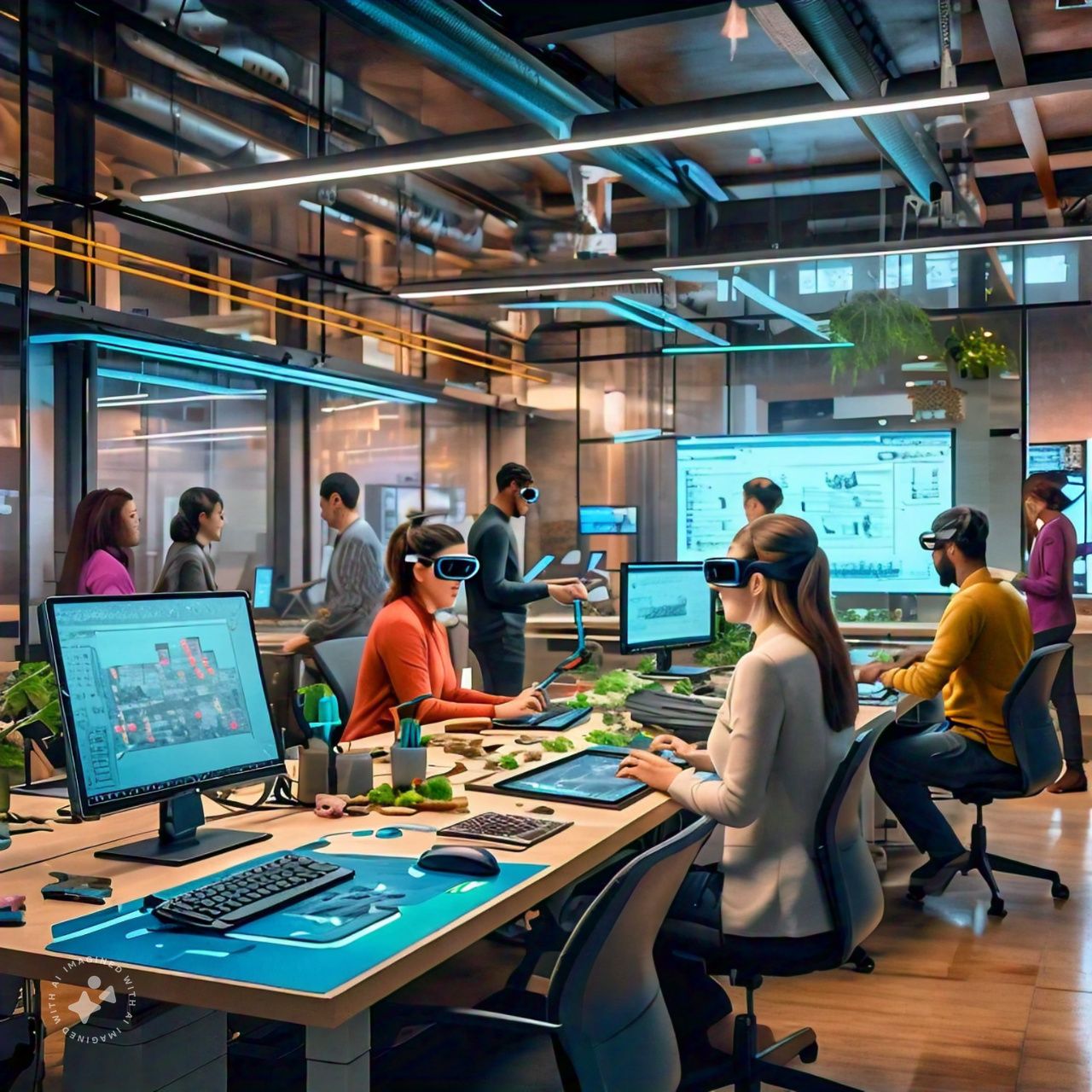Augmented Reality: Enhancing User Experiences
Augmented Reality (AR) is an immersive technology that has revolutionized the way users interact with digital content in the real world. By blending virtual elements with the physical world in real-time, AR enhances user experiences across various industries, from entertainment to healthcare. This article explores the core principles of AR, its applications, and its growing impact on daily life.
What is Augmented Reality?
Augmented Reality is a technology that superimposes digital information, such as images, sounds, and videos, onto a user’s view of the real world. Unlike Virtual Reality (VR), which creates a completely immersive environment, AR enhances reality by integrating computer-generated elements with the user’s surroundings. This combination of the virtual and the real opens up new opportunities for interaction and engagement.
The technology relies on a variety of tools, including sensors, cameras, and software to recognize and track the real world. Once the environment is analyzed, digital content can be projected onto the physical world through devices like smartphones, tablets, AR glasses, and headsets.
Applications of Augmented Reality
- Entertainment and Gaming AR has made a significant mark in the entertainment and gaming industries. The success of games like Pokémon Go, which encourages players to interact with their surroundings while capturing virtual creatures, highlights the potential of AR in gaming. By combining the real world with engaging digital content, AR offers players a unique experience that blurs the lines between fiction and reality.Beyond gaming, AR is also transforming how people consume content. For example, AR experiences at live concerts, art installations, or theaters can enhance the atmosphere, providing users with interactive elements that complement the performance.
- Retail and E-Commerce In retail, AR is being used to enhance the shopping experience by allowing customers to visualize products in real-time. For instance, furniture stores like IKEA have developed AR apps that allow customers to see how a piece of furniture would look in their home before making a purchase. Similarly, fashion retailers use AR to help customers try on clothes virtually, reducing the need for physical fitting rooms.This capability is driving online shopping, where customers can use AR to see products in their actual environment, increasing confidence in their purchasing decisions and boosting sales.
- Healthcare The healthcare sector is increasingly adopting AR to enhance both medical training and patient care. Surgeons can use AR for real-time data visualization during operations, overlaying critical information, such as patient vital signs or 3D models of organs, directly onto the body. This can improve precision and reduce risks during complex surgeries.AR also aids in medical education, offering students and professionals a way to study human anatomy interactively and practice procedures in a simulated yet realistic environment.
- Education and Training AR is transforming education by providing immersive, interactive learning experiences. In classrooms, AR can bring abstract concepts to life by visualizing complex topics like the solar system, human anatomy, or historical events. Students can engage with digital models, making learning more engaging and impactful.In professional training, AR enables hands-on learning without the associated risks. For instance, industries such as aviation, engineering, and the military use AR to simulate real-world scenarios, helping trainees practice skills in a controlled environment before applying them in real life.
- Navigation and Tourism AR is reshaping how people navigate and explore new environments. Applications like Google Maps now integrate AR to provide turn-by-turn directions through live video feeds, allowing users to follow routes in real-time while walking or driving. This feature enhances the navigation experience, especially in unfamiliar areas.In tourism, AR apps help travelers discover historical landmarks and points of interest. By simply pointing their device at a monument or museum exhibit, users can access additional information, such as historical facts, videos, or translations, enriching their travel experience.
- Workplace Productivity Augmented Reality is increasingly being used to improve workplace productivity and collaboration. For example, AR can support remote assistance, where experts guide workers through complex tasks by overlaying instructions or blueprints on their environment. This is particularly useful in industries like manufacturing, maintenance, and logistics, where precision is critical.AR-powered devices, such as smart glasses, enable workers to access real-time data and instructions hands-free, allowing them to stay focused on the task while receiving necessary information.
The Future of Augmented Reality
As AR technology continues to advance, its potential to enhance user experiences will expand further. With the development of AR glasses and wearables, the technology is becoming more integrated into everyday life, offering users a seamless blend of the physical and digital worlds. These devices are expected to evolve into compact, stylish, and functional products, opening up new possibilities for both personal and professional applications.
In addition, advancements in AI, machine learning, and 5G connectivity will make AR experiences more intelligent, faster, and accessible. The ability to instantly access and interact with digital content in real-time will become commonplace, driving innovation across industries and creating richer user experiences.
Conclusion
Augmented Reality is redefining how users interact with the world around them. By enhancing reality with digital content, AR is revolutionizing industries ranging from entertainment to healthcare, education, and retail. As the technology continues to mature, it will play an even greater role in shaping how we experience and engage with both the physical and virtual realms. The future of AR promises even more dynamic, personalized, and immersive experiences, transforming the way we work, learn, shop, and play.











